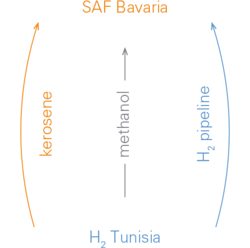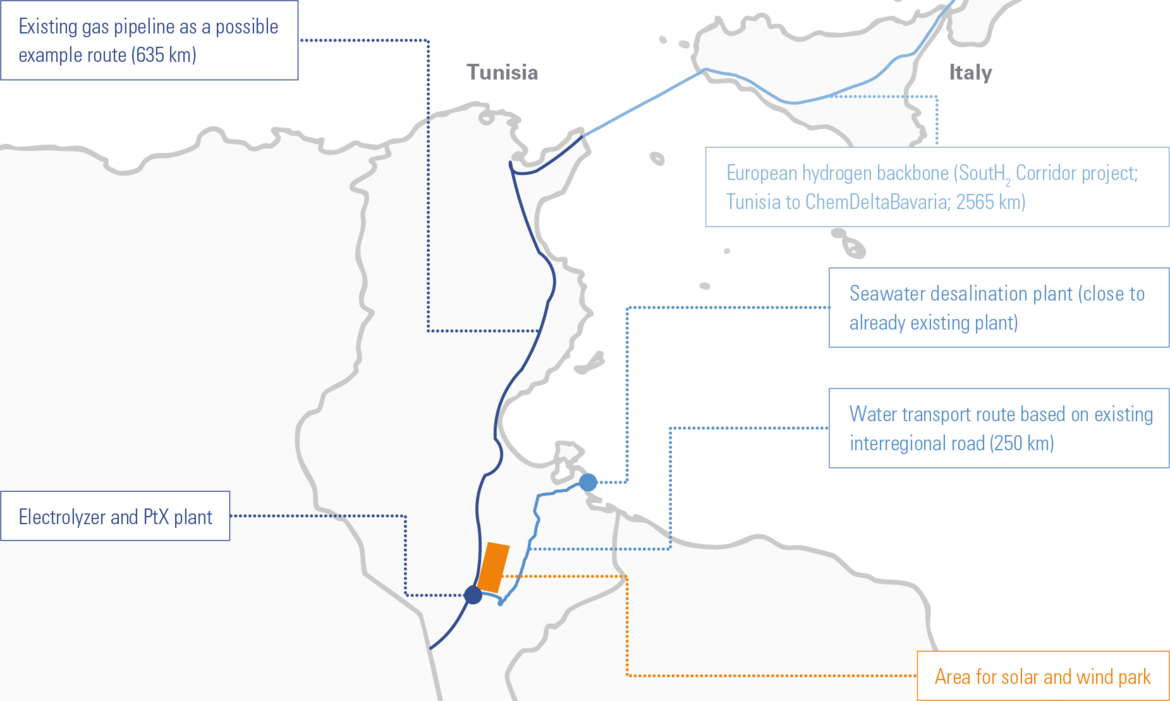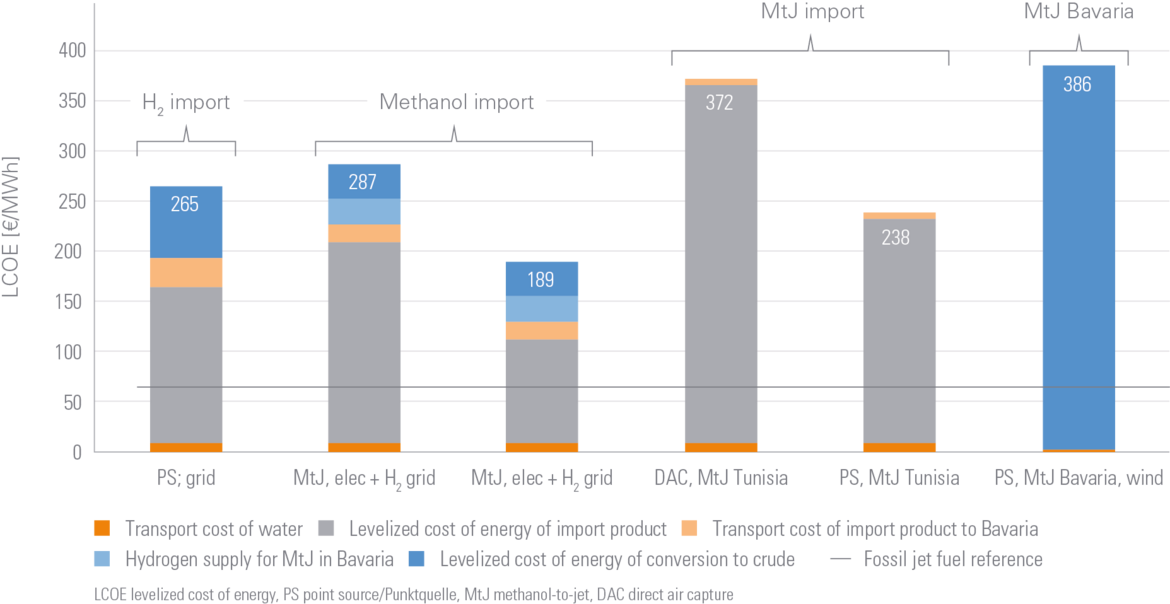Fuel suppliers to European Union airports are mandated to meet ReFuelEU Aviation quotas for sustainable aviation fuels increasing from 2 % in 2025 to 70 % by 2050. This necessitates a transformation of the fuel production landscape, with new infrastructure emerging and repurposing of existing infrastructure. In addition, sub-quotas for synthetic fuels are prompting discussion about optimized power-to-x (PtX) production pathways, sites, and import options.

Bauhaus Luftfahrt compared three distinct import options: hydrogen, methanol, and synthetic kerosene. Methanol and kerosene can be
easily transported over long distances, while importing hydrogen via pipeline may also be viable if costs are shared by different sectors. The SouthH2 Corridor pipeline project, scheduled to commence operation by 2030, may represent a pivotal development for Bavarian refineries. It will be part of the European Hydrogen Backbone and extends from Tunisia via Italy and Austria to refinery sites in Burghausen and Ingolstadt. The entry point in Tunisia was selected as the common production site; if hydrogen and methanol are imported, kerosene synthesis is assumed to take place in Bavaria via methanol-to-jet (MtJ) conversion. Finally, the production costs of different scenarios were analyzed.
The comparison indicates that synthetic kerosene or methanol import results in lower fuel provision costs if suitable CO2 point sources are available, due to favorable wind and solar resources in Tunisia. However, if CO2 in Tunisia needs to be supplied by direct air capture, hydrogen import via pipeline and utilization of Bavarian CO2 point sources may be more cost-efficient.


The underlying project was funded by the Federal Ministry for Economic Affairs and Climate Protection under the funding code 20M2246C.


